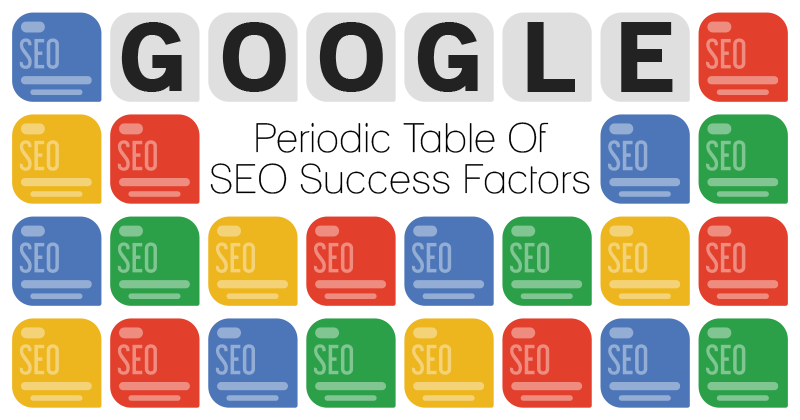Search Engine Land Releases New SEO Periodic Table

This year marks the fourth time that Search Engine Land has released their Periodic Table of SEO Ranking factors. Way back in 2011, Search Engine Land created the Periodic Table of SEO Ranking Factors to clarify SEO to professionals and novices, removing the belief that SEO was a “dark art”1. Although there’s been a few changes in the world of SEO since 2017, much has stayed relatively the same.
Search Engine Land chose to update and undertake a major overhaul of the periodic table in 2019 so that they could coincide its release with the 150th anniversary of Dimitry Mendeleev’s original Periodic Table of Chemical Elements. Below we review some of the most important factors that affect SEO, as well as some of the changes they’ve made to their actual periodic table. The findings can be applied to all search engines but Search Engine Land seems primarily concerned with Google, which makes sense as it’s the most popular search engine.
Yes, Content Is Still King
Before I tell you about what’s changed, let’s cover the most important element that hasn’t changed—the importance search engines place on your content. It’s the first factor on the periodic table because if you have great content, all things good SEO-wise will follow. What’s considered great content? Content that is written for human consumption (as opposed to search engines) and that is relevant for your target audience (the table specifically rates Quality (pages must be well-written and highly valuable) and Research (keywords people may use to find content) as the most important elements within the Content grouping). If it’s relevant, the target audience will consume and the search engine will think it has done a great job of delivering the right content to the right audience.
Other SEO Tactics Still Matter
We’ve singled out great content as the most important factor (because without great content, none of the other SEO tactics will help much), but that doesn’t mean you don’t need to bother with these other tactics. You need to do both, develop great content and help search engines and users discover that great content. Therefore, in the periodic table, they’ve outlined other important groups of similar factors include architecture (all those elements of the site structure, including mobile-friendly), HTML (meta tag descriptions, headings etc), Trust (authority of links, shares and other signals etc), Links and User (such as user experience).
With the Architecture group, the most important element is Crawl, because if a search engine can’t find and read your site, you’re never going to appear in the search engine results page. Mobile and speed are also important, with more searches (since 2015) happening on mobile rather than desktop, and since slow sites frustrate users, you need to optimize for these elements to rank well.
The HTML group encompasses all those elements that speak to search engines and tell them what your content is about. The most important element is Titles, meaning that you need to build in keywords into your titles.
The Trust group has Authority as the most important element, while for Links, Value is the most important element, and by Value they mean that you have links from trusted, quality websites. Finally, for the last group, User, they rank Country and Local as the most important elements, but here they really mean whether your website considers the location of the user, for example, is the website in the right language for the area that you’re in. Both of these elements point to User Experience, which they also rank high, and this is measured by how quickly someone jumps back to the search engine results page after visiting a site (bounces).
Breaking Out Negative SEO
This is the first year that the Periodic Table breaks out those elements that can negatively impact your search rank and they include Cloaking, Schemes, Stuffing, Hiding, Piracy and Intrusive. Google is getting a lot better at detecting these “black hat” techniques, so the impact to your site if you engage can be quite substantial, in fact, we wrote a whole blog post about the issue, Should You Worry About Negative SEO?
The Big SEO Changes
The periodic table also now lists some emerging verticals that you’ll need to prepare for, including voice (i.e. Alexa, Google and Siri), Local (listings, reviews, maps and more), images and videos. All of these technologies will change the way people search.
Want a copy of the Periodic Table? Visit the Search Engine Land blog post and scroll down to to Related Resources.
Don’t have the time to know all this stuff? Contact us instead.
